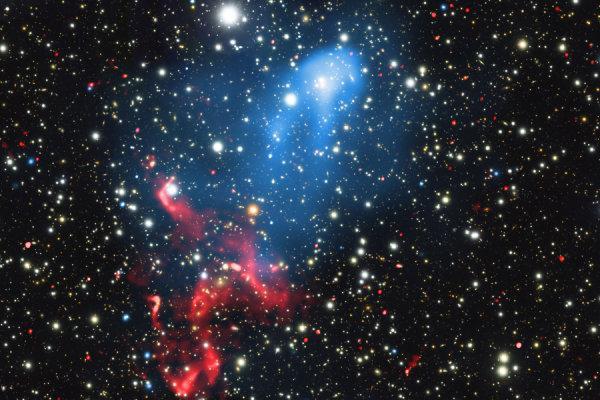
LANCASTER, England, Jan. 7 (UPI) — Astronomers have discovered a cosmic particle accelerator created by the combination of two of the most powerful phenomena in the cosmos — the collision of massive galaxy clusters and a supermassive black hole.
Astronomers discovered the rare duo by combining observations from X-ray, optical and radio telescopes. The research team described their discovery in the journal Nature Astronomy.
“We have seen each of these spectacular phenomena separately in many places,” study leader Reinout van Weeren, a researcher with the Harvard-Smithsonian Center for Astrophysics, said in a news release. “This is the first time, however, that we have seen them clearly linked together in the same system.”
The merger features two giant galaxy clusters, Abell 3411 and Abell 3412, roughly 2 billion light-years from Earth. Each cluster weighs approximately 1 quadrillion solar masses. In optical observations, the collision of hot galactic gases resembles a comet.
Particles in the merger are being subjected to a combination of tremendous forces. In one of the clusters lies a supermassive black hole, accompanied by a rotating magnetic funnel. The funnel’s electromagnetic fields spit some of the black hole’s inflowing gas back out in the form of a high-speed relativistic jet.
The energy of the jet stream’s accelerated particles are further boosted by the shockwaves created by the clash of galactic gas clouds.
“It’s almost like launching a rocket into low-Earth orbit and then getting shot out of the Solar System by a second rocket blast,” said co-author Felipe Andrade-Santos, also a CfA researcher. “These particles are among the most energetic particles observed in the Universe, thanks to the double injection of energy.”




